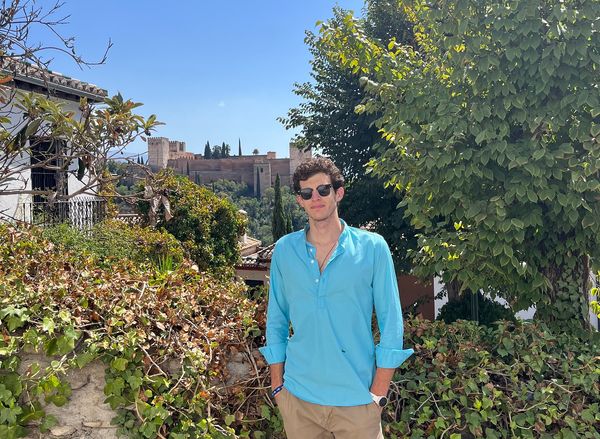What Is Meant by Gold and Green Open Access?
Open Access (OA) is when publications are wholly and freely available online for everyone, at no cost, with reuse possibilities. An unrestricted research distribution is of utmost importance for:
- Authors, because more people see their work
- Readers, because they can access and build upon the work of others
- Funders, because the work they fund has a broader impact as it reaches a larger audience.
We can use a color system to describe the currently different OA models. However, the two most widely used routes to Open Access are Gold and Green OA, which we will discuss in this article. We will also cover the differences between them and how they work.
What Is the Gold Open Access Model?
Gold OA allows the final version of an article to be freely and permanently accessible for everyone immediately after publication. Most of the permission barriers are removed, and reuse of the work is allowed as long as authors retain copyright, are acknowledged, and cited. Gold OA articles can be published in either fully OA journals or hybrid journals (which contain a mixture of OA articles with closed access articles).
The immediate availability allows these types of publications to reach a level of visibility that positively impacts extensive dissemination and how frequently it is cited.
What Is the Green Open Access Model?
Green OA, also known as self-archiving, places a (usually earlier) version of an author’s manuscript into a repository, making that version freely accessible to anyone. The version that is made available depends on the funder or the publisher. In comparison with Gold OA, the copyright for these articles sits with either the publisher or the society affiliated with the title. Additionally, there are restrictions regarding use and reuse.
The author’s contract would have to be carefully reviewed to enable an article to be reused in a way that abides by all the legal stipulations. There is also no uniform rule governing the open accessibility of these publications as each journal or publisher imposes different embargo periods (which focus on which article version can be used and when the article can be made freely available in the repository).
There are different self-archiving policies to determine the terms and conditions, and they can be found in the Sherpa Romeo archive, which we will cover more in-depth later.
Gold OA vs. Green OA - What Are the Differences?
Ultimately, in terms of the requirements set by individual institutions or any funding bodies, both options of Gold vs. Green are considered to be of equal value, with some exceptions. Below is a table exemplifying those exceptions:
How Does Gold OA Work?
How Open Access works depends on each journal’s procedures and guidelines. Gold OA follows these steps:
- Checking the funder’s or institution’s policy on OA. They may have requirements (as to what license to use, for example) on publishing OA work.
- Choosing the journal that is the best fit for the research conducted. To do this, you need to check the license, embargo, and publishing charges associated with your choices.
- Finding out who will pay the publishing charges (or article publishing charges - APC). The funder or institution often pays this fee, and it is a fee responsible for making an article Gold OA.
- Writing and submitting an article or paper following the journal guidelines. Making any corrections suggested by peer reviewers or editor comments.
- Selecting your preferred Creative Commons (CC) license to comply with funder mandates and to select how others will use your work.
Once you are published in an Open Access journal, your article or paper will be available anywhere and for everyone to read, which maximizes impact and reach.
Gold Open Access Publishing Options
There are many publishing options for Gold OA. Below are just a few:
- Taylor and Francis Open - some of the journals here have always been exclusively published Gold OA, while those that have not are part of an ongoing program to convert subscription journals to full OA.
- Dove Press - primarily publishing in the health sciences and a little bit in science and technology, they have a strong portfolio of high-quality, peer-reviewed OA journals.
- F1000 Research - an open research platform available to scientists, clinicians, and scholars offering fast publication of articles and no editorial bias for other research outputs.
- Open Select - this is a hybrid OA platform with over 2,300 subscription-based journal options for Gold OA. It offers titles in most subjects and disciplines such as social sciences, medicine, technology, humanities, engineering, arts, and ranging across the sciences.
How Does Green OA Work?
For Green OA, three different version types can be self-archived in repositories:
- Pre-prints - a not yet peer-reviewed version of the author’s copy of an article.
- Post-prints - the author’s copy of an article after it has been reviewed and corrected, but before it has the publisher formats it for publication.
- Publisher’s version - the version that is formatted and appears online or in print.
Green Open Access Publishing Options
The Sherpa Romeo database mentioned earlier contains self-archiving information and publisher copyright policies that authors can use to check which version of an article they are allowed to archive. The publisher’s policy determines which version of the article can be archived in a repository if authors have signed a Copyright Transfer Agreement (CTA). Authors can check this CTA for information about Green OA publishing, as most publishers allow for Green OA.
For easy identification, the Sherpa Romeo database classifies publishers into the following colors:
- Green - publisher policies allow archiving of pre-print and post-print or publisher’s version/ PDF
- Blue - publisher policies allow archiving of post-print or publisher’s version/PDF
- Yellow - publisher policies allow archiving of pre-print
- White - publisher policies do not formally support archiving any version.
Summing Up
There are several OA publishing options, and we have covered the two most commonly used ones - Gold and Green. Regardless of their differences, it’s important to remember that anything published under the OA umbrella means advancement in research, peer review, knowledge sharing, and access to information, among many other benefits.
Orvium is an Open Access Platform that helps with all of these advancements and much more. Just read our article about why openness is a must for research to better understand why openness in science (and not only) is crucial. Additionally, we collaborate with OpenAIRE and Google Scholar to further support and guarantee access to scientific research.
To read even more insightful information, check out our platform.




